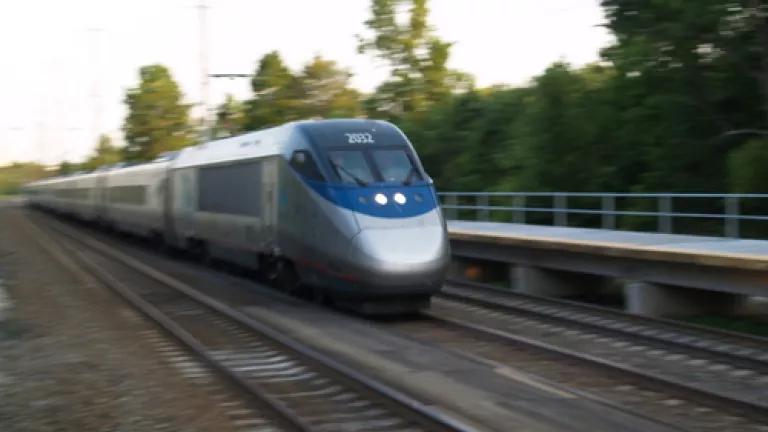
I’ve often written about much of the industrialized world lapping us in the global transportation infrastructure competition. I don’t know if I’d go as far as George Packer, who cites it as one of several pieces of evidence that we are laboring under a broken social contract here in the U.S. (read his thought-provoking, if depressing, piece
here), but I do think it’s a big problem for our future as a nation.
Last week I had a chance to check out firsthand some ongoing work to make up some lost ground. Amtrak took several members of the OneRail coalition on a “Northeast Corridor Familiarization Trip,” and we traveled from Washington’s Union Station to New York’s Penn Station. On the way up we learned about some of the challenges faced by the corridor, and many of its advantages compared to other potential high speed rail routes.
First of all, by the international definition we do not have high speed rail yet in this country. High speed rail technically requires speeds of 155 miles-per-hour (mph) or more, and Amtrak’s Acela service in the Northeast Corridor tops out at about 150 mph. We didn’t get up to that speed, but for some stretches we reached 125 mph or more.
A colleague from America 2050, Petra Todorovich, worked with a couple of colleagues on a useful new report comparing high speed rail in the U.S. to other nations in a new report available from the Lincoln Institute of Land Policy here. Japan built the first line connecting Tokyo to Osaka, the Shinkansen, way back in 1964. Since then lines have been built or are under construction in Belgium, China, France, Germany, Italy, the Netherlands, South Korea, Spain, Taiwan, Turkey and the United Kingdom.
In the new report, Petra suggests focusing first on two corridors that most resemble successful connections elsewhere vis-à-vis population and business density that could yield substantial ridership: California from San Francisco-to-Los Angeles and the Northeast Corridor from Washington to Boston. And in an interesting and recent turn-of-events, even Amtrak skeptic and House Transportation Committee Chairman John Mica ( who has said Amtrak is a Soviet system) has recently agreed that the company is indispensable as leader of high speed rail in the Northeast Corridor.
Two challenges faced by Amtrak as it tackles this huge project are governance and money. First, there are 15 commuter and freight rail companies that share the rails with Amtrak in this highly populous corridor. Unlike other corridors, freight is the least of these co-users, with just 50 trains a day. Compare this to the Long Island Railroad (LIRR), which runs a staggering 581 trains a day on the lines. We saw several LIRR trains, as well as NJ Transit (387 a day) and Southeast Pennsylvania Transportation Authority (or SEPTA, with 374 daily), as we chugged up the corridor. Ensuring adequate capacity, and “interlocking” as the connections with alternative rails are called, is an expensive and important proposition.
And that brings up money. According to the materials provided by Amtrak, eliminating the backlog of deferred maintenance for tracks, the electric traction system, signal systems, stations as well as a host of tunnels and bridges (including one in Baltimore which has been in operation since 1873!) will cost more than $5 billion. And that doesn’t count upgrades to rolling stock (i.e., engines and passenger cars), which are desperately needed given that some cars have been on the rails for decades and the life expectancy for high speed rail vehicles is shorter than conventional trains (they take a beating).
However, there is good news. Thanks to the state of Florida turning down funding for new rail capacity between Orlando and Tampa, about $450 million of Recovery Act funding is going towards a symbolically important project on the corridor. Nicknamed “the racetrack,” this rail link connecting New Brunswick and Trenton in New Jersey will likely be completed in mid-2015. Not only will it accommodate NJ Transit trains, it will allow Acela to hit international high speed rail status at 160 mph for a whole 23 miles. While this won’t shave much time off the whole Washington-to-New-York-City route, it will demonstrate that we can build real high speed rail in this country, and serve as a model for the rest of the corridor and beyond.
Riding the racetrack section at about 135 mph or so was the most thrilling part of the day, and I look forward to riding the rails on the corridor as speeds rise in the coming years.
